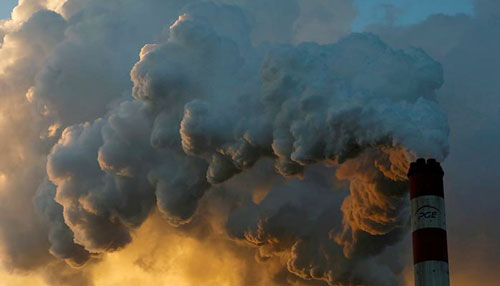London
As 2020 comes to an end, it leaves in its wake the warmest decade on record and one of the three hottest years ever measured, according to the United Nations weather agency.
Despite a cooling La Niña event, 2020 has been a year of exceptional heat that is now mature and impacting weather patterns in many parts of the world, the World Meteorological Organisation (WMO) said Saturday.
“Record warm years have usually coincided with a strong El Niño event, as was the case in 2016”, WMO chief Petteri Taalas said in a statement.
Tuvalu, an archipelago of nine atolls in the South Pacific Ocean, where the average height of the islands is less than 2 metres above sea level, is highly susceptible to the effects of global warming.
However, he noted, “we are now experiencing a La Nina, which has a cooling effect on global temperatures, but has not been sufficient to put a brake on this year’s heat”.
“Despite the current La Nina conditions, this year has already shown near-record heat comparable to the previous record of 2016”, said the top WMO official.
WMO has also documented the last six years as being the warmest.
In January, the UN agency will issue consolidated temperature figures for 2020, based on five global temperature datasets.
This will be incorporated into a final report on the State of the Climate in 2020, which will be issued in March and will include information on selected climate impacts.
To date, all five data sets for the first 10 months of 2020 has placed this year as the second warmest for the year, following 2016 and ahead of 2019.
Based on monthly reports from the European Unions’ Copernicus Climate Change Service, the United States National Oceanic and Atmospheric Administration and NASA’s Goddard Institute for Space Studies, and the Japan Meteorological Agency, November has been classified as either the warmest or second warmest on record.
The difference between the warmest three years is small and exact rankings for each data set could change once data for the entire year are available, according to WMO. Ranking temperatures for individual years is less important than long-term trends, the UN weather agency explained.
Since the 1980s each decade has been warmer than the previous one. And because of record levels of heat-trapping greenhouse gases in the atmosphere, the trend is expected to persist.
A glacier along the east coast of Greenland is seen out the window of a Gulfstream jet. — Reuters/File
In particular, carbon dioxide is driving the planet to future warming because it remains in the atmosphere for many decades. According to WMO’s Global Annual to Decadal Climate Update, there is a one-in-five chance that the average global temperature will temporarily exceed 1.5 °C by 2024.—APP










